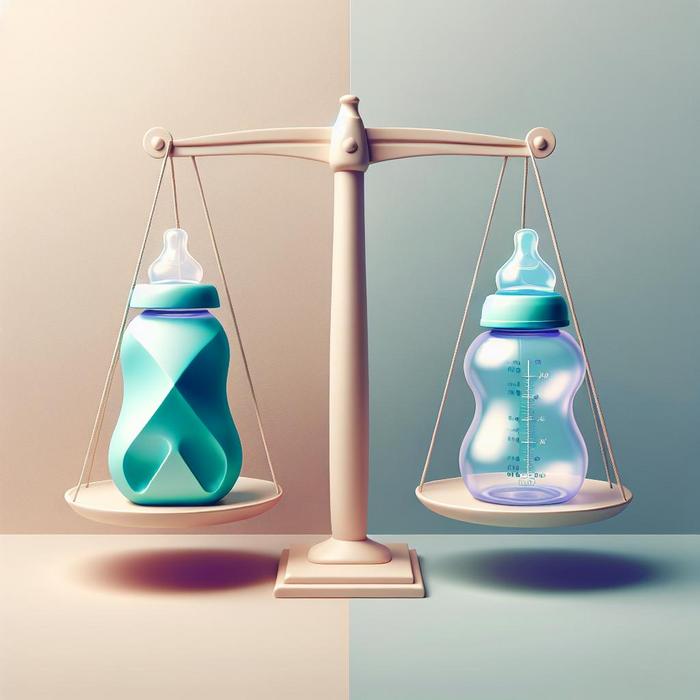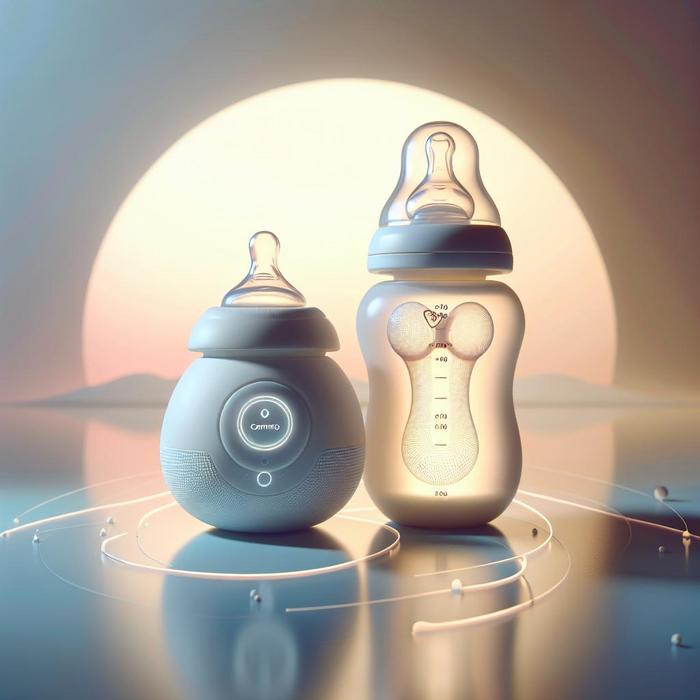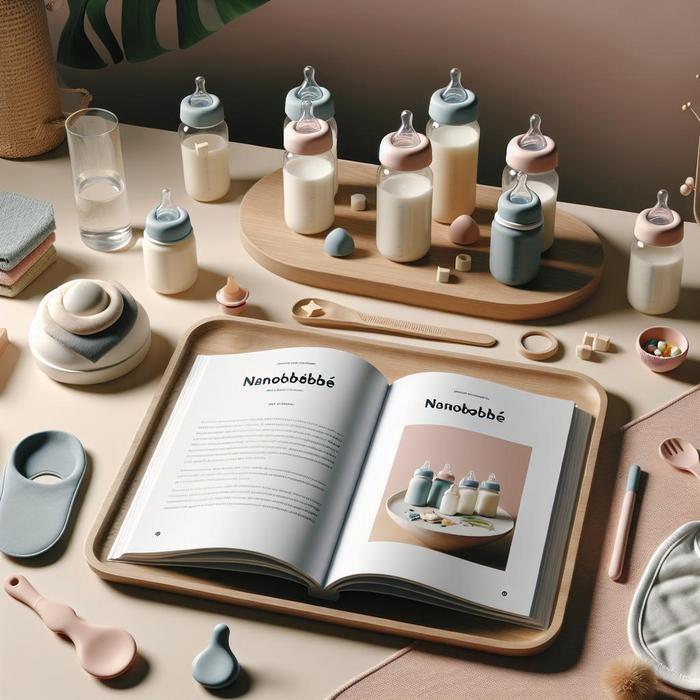Making an Informed Decision: Biomimetic Feeding
As a parent, few decisions are as important as the one about feeding your newborn. The market is packed with numerous options, which can often cause choice paralysis. To help you navigate this, let’s focus on biomimetic feeding – a method that aims to mimic natural breastfeeding as closely as possible.
What is Biomimetic Feeding?
Biomimetic feeding aims to create a feeding experience that’s as close to natural breastfeeding as possible. This method uses baby bottles designed to mimic the natural flex, stretch, and feel of a mother’s breast to foster a seamless transition from breast to bottle. This helps prevent issues such as nipple confusion and bottle rejection – common concerns among new parents.
Biomimetic Feeding Brands
In your quest to provide the best for your baby, you’ll come across a few brands that pride themselves on their biomimetic feeding options. These include Nanobébé, Comotomo, Tommee Tippee, and Philips Avent.
- Nanobébé: Their bottle design aims to preserve breast milk nutrients and offers an ergonomic shape similar to a mother’s breast.
- Comotomo: They are known for their soft, skin-like silicone baby bottles that mimic breastfeeding to reduce bottle rejection and nipple confusion.
- Tommee Tippee: Their Closer to Nature bottles are designed to mimic the natural flex, stretch, and movement of a mother’s breast.
- Philips Avent: Their Natural baby bottle features wide, breast-shaped nipples to encourage a natural latch similar to the breast.
Each of these brands has a unique take on the biomimetic feeding method, providing various options depending on your baby’s specific needs.
Choosing Between Tommee Tippee and Philips Avent for Biomimetic Feeding
If you’re finding it difficult to decide between Tommee Tippee and Philips Avent, let’s take a closer look at each. Both brands are known for their efforts in mimicking natural breastfeeding, but they offer unique features that could tip the scales depending on your specific needs.
Tommee Tippee Closer to Nature bottles are designed to provide a natural latch with a soft nipple that mimics the stretch and flex of the breast. This makes it an ideal choice if your baby is struggling with the transition to bottle-feeding. You can buy it here.
On the other hand, Philips Avent Natural baby bottle has a wide, breast-shaped nipple promoting natural latch similar to the breast. It’s designed to make it easier to combine bottle and breastfeeding, which can help if you plan to regularly switch between the two. Check it out here.
Your Choice Matters
Choosing the right bottle goes beyond simply selecting a product. It’s about making a decision that will impact your baby’s feeding experience and their transition from breastfeeding to bottle-feeding. Take time to explore your options and make an informed decision that best suits your baby’s needs. Remember, every baby is different, and what works for one might not necessarily work for another.
Reading experiences from other parents can also provide a wealth of knowledge. Check out these discussions on the best baby bottles and help with choosing new bottles on Reddit’s NewParents community.
Most importantly, remember that while the bottle choice is crucial, it is just one part of the feeding journey. Stay patient and remember all feeding options come with their trials and tribulations. Keep an open mind, be flexible, and remember the goal: a well-fed, happy, and healthy baby.
Value-Based Optimization in Selecting Baby Bottles
In my journey as a performance marketer, applying value-based optimization principles has changed how I view decision making in all aspects of my life, including choosing a baby bottle. Value-based optimization optimizes your strategy for high-value actions. It strives to understand the qualitative value – in this case, the satisfaction of feeding – rather than focusing solely on quantitative aspects, such as the cost of the bottle.
Understand Your High-Value Events
When selecting a baby bottle, understanding high-value events is crucial. A high-value event in this context could be baby’s acceptance of the bottle, the ability to latch correctly, or minimizing colic and gas. It can also be about sustainable use (how often the bottle can be sterilized without damage) and essential nutrients preservation. Noting these high-value events will determine the overall success of our ‘bottle-feeding campaign’.
A/B Testing
Just as in my journey as a digital marketer, I have found A/B testing to be a vital tool in selecting the best baby bottle. Testing two brands side by side can provide an informed perspective. BabyGearLab offers an excellent review of various leading baby bottle brands. You can also research reports and articles on The Wirecutter and the Urbana Pediatric Dentistry website for more insights.
ROI (Return on Investment)
In evaluating your choice, consider the ‘Return on Investment’ (ROI). How much value do you get relative to the price of the bottle? Is it easing the transition from breastfeeding to bottle feeding for your baby? Is it aiding nutrient retention in the breast milk? Ensure the selected bottle takes care of main areas of concern for the value invested, similar to how an optimal ad campaign from my digital marketing experience would generate higher leads for the cost incurred.
Look for reassurance in clinical trials and proven outcomes. For instance, a study published on NCBI argues the importance of mimicking the mechanics of breastfeeding to improve feeding efficiency and overall infant health.
Acknowledging Customer Feedback
Last but not least, consider feedback from other users, just like in value-based ad optimization, where you constantly look for ways to enhance strategy based on user engagement and feedback. Reading experiences from other parents can also provide a wealth of knowledge.
Adjusting your approach
Just like the digital campaigns that I manage, what works today might not work tomorrow. Babies change and grow daily, and what they accept today, they may reject tomorrow. Be prepared to adjust, switch brands, try different bottle forms and nipple styles.
In the end, despite all the testing, feedback, and evaluations, remember that you are doing your best for your baby. The choice of bottle is important, but so is your peace of mind and your baby’s happiness. Just as with marketing strategy, the process of evaluation and decision-making is just as significant as the outcome.






